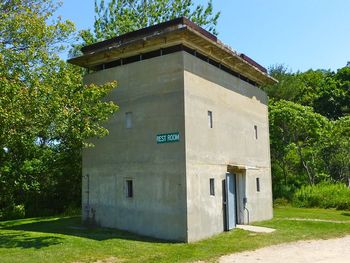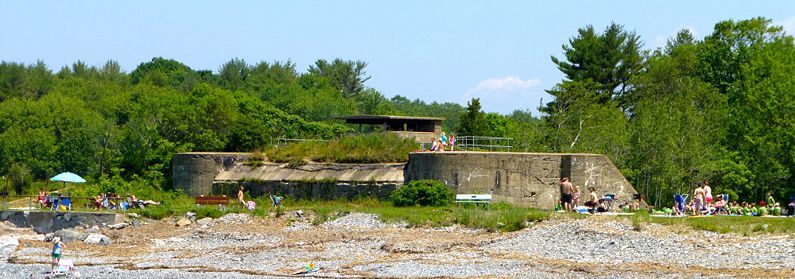Fort Foster (1)
|
Fort Foster (1) (1873-1948) - An Endicott Period Coastal Fort first established in 1873 on Gerrish Island, York County, Maine. Named Fort Foster in G.O. 43, 4 Apr 1900, after John G. Foster, a native of New Hampshire, and a lieutenant colonel, Corps of Engineers, U.S. Army, who served with distinction in the Mexican War and the U.S. Civil War, attaining the rank of major general, U.S. Volunteers during the Civil War. Post abandoned by the U.S. Army in 1948. Assigned Location ID ME00060.
Endicott Period (1890-1910)Part of the Harbor Defense of Portsmouth, New Hampshire. The land for Fort Foster was acquired in two parcels, the first was a 40-acre parcel acquired in 1873 and the second was a 48-acre parcel formally acquired on 27 Feb 1943. Construction began on the first of two Endicott Period gun batteries in 1898 and both were completed by 1904. Battery Bohlen was armed with three 10" guns on Disappearing carriages and Battery Chapin was armed with two 3" rapid-fire guns. In 1909 a secondary mine station was built 25' in the back of Battery Chapin. This station was accepted for service on 9 Feb 1909 at a cost of $ 705.55. Post construction was very limited and initially, the only quarters constructed were an NCO/caretaker dwelling. The Reports of Completed Batteries (RCB) for the pre World War I period show the post garrisoned by detachment from Fort Constitution (2).
World War I (1917-1918)In August of 1917, all three 10" guns of Battery Bohlen were ordered dismounted for use abroad. All three guns were transferred to France in October 1917 and subsequently transferred back to Fort Foster in September 1919. The guns were then remounted in Battery Bohlen. A number of temporary World War I buildings were constructed during the war including temporary officers quarters, enlisted barracks, post exchange and stable. These temporary buildings were removed in the 1920s and for most of the 1920s and 1930s, the post was in caretaker status.
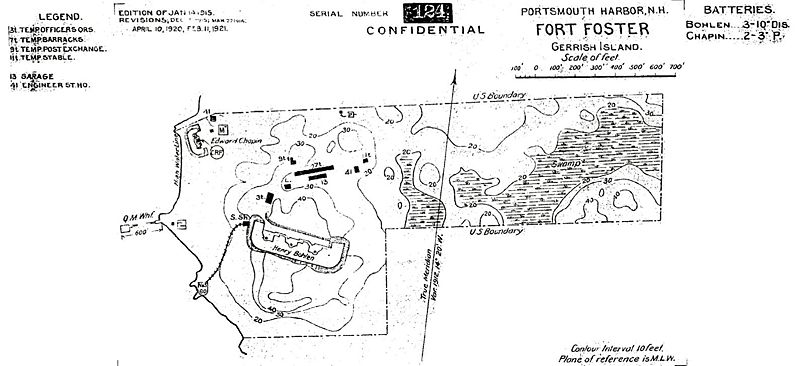 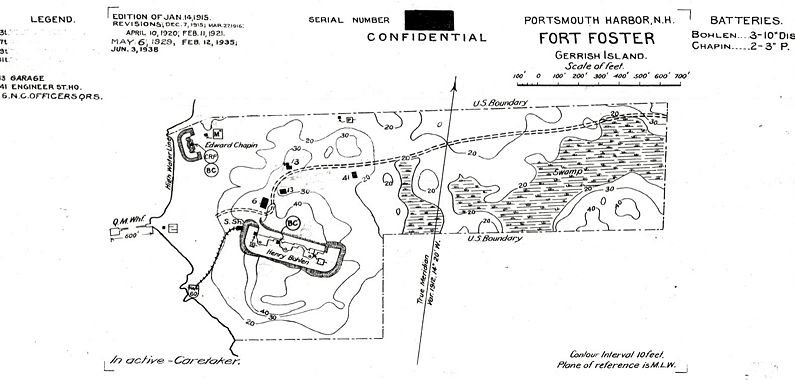
World War II (1941-1945)Two World War II gun batteries were planned for Fort Foster, 6" Battery 205 and 90mm Battery AMTB 952. Construction began on Battery 205 in November 1942 on the 40 acres still under the acquisition process. This battery was completed in September 1944 but the gun tubes never arrived and it was never armed. Battery AMTB 952 was begun and completed in 1943 as a protection against fast motor torpedo boats and aircraft. The AMTB battery was located in front of Battery Bohlen which had been approved for abandonment in December 1942. 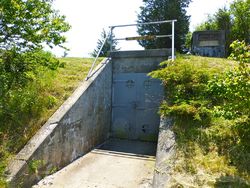 In 1942 a three-story mine control station was built in the back of Battery Bohlen. The station was accepted for service on 8 Jul 1942 at a cost of $ 13,944.39. Also constructed during World War II was a new mine casemate near Battery Bohlen. During World War II Portsmouth Harbor was protected by a series of underwater defenses that included controlled underwater mines, underwater hydrophones, underwater magnetic loop detectors and an underwater anti-torpedo boat nets across the harbor channel. Many of the defenses of Portsmouth were focused on protecting the minefields from small fast minesweepers and motor torpedo boats. The mine field defenses included three 3" gun batteries, two 90mm AMTB batteries and four portable searchlights. The Portsmouth Harbor Mine Fields were made up of fourteen groups of 19 mines each. The mine casemate #2 at Fort Foster controlled mine groups 1 to 7 while mine casemate #1 at Fort Constitution controlled mine groups 8 to 14. The hydrophones and magnetic loop detectors were positioned in front of the mine groups to detect approaching ships. Ship tracks were plotted in the plotting room in mine casemate #1. Control of the minefields came from the two mine casemates under a group command. Arming and firing the mines was done in the respective mine casemates. Most of the mine support structure was located at Fort Constitution except for the explosive storage facility at Fort Dearborn. On 19 May 1943 a six-story fire control observation tower was accepted for service in support of Battery 205 at a cost of $10,630.00. This was a square concrete six-story tower located just north of Battery 205. Although accepted for service, this tower is not shown on the list of defense elements because Battery 205 was never armed. Post construction during World War II included four 66 man barracks, a mess hall, an admin building, an infirmary, two recreation buildings, and a 6 man officers quarters and mess. All of the buildings were of temporary World War II type construction. The cantonment area was located on the original parcel of land by the Endicott Period batteries.
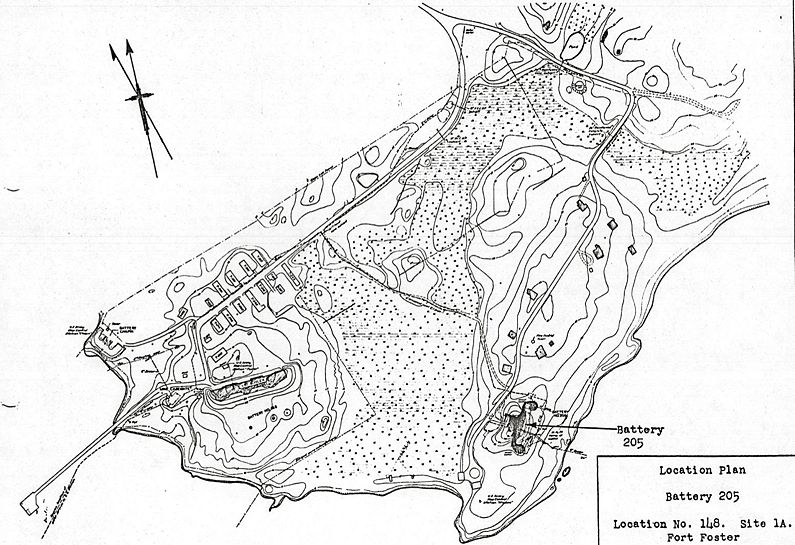
Current StatusPart of Fort Foster City Park, Gerrish Island, York County, Maine. No period guns or mounts in place.
Sources:
Links: Visited: 20 Jun 2012 | ||||||||||||||||||||||||||||||||||||||||||||||||||||||||||||||

